Kiss of the Yogin
TANTRIC SEX IN ITS SOUTH ASIAN CONTEXTS
David Gordon White
THE UNIVERSITY OF CHICAGO PRESS
CHICAGO AND LONDON
The University of Chicago Press, Chicago 60637
The University of Chicago Press, Ltd., London
2003 by The University of Chicago
All rights reserved. Published 2003
Paperback edition 2006
Printed in the United States of America
Kamil Zvelebils translation of the late medieval Tamil poem the Kmapnacstiram (Treatise on the Arrow of Lust) on pp. 7475 was previously published in The Siddha Quest for Immortality: Sexual, Alchemical and Medical Secrets of the Tamil Siddhas. Oxford: Mandrake of Oxford (1996).
11 10 09 08 07 06 2 3 4 5
ISBN 0-226-89483-5 (cloth)
ISBN 0-226-89484-3 (paperback)
ISBN-13: 978-0-226-02783-8 (e-book)
Library of Congress Cataloging-in-Publication Data
White, David Gordon.
Kiss of the yogin: Tantric Sex in its South Asian contexts / David Gordon White.
p. cm.
Includes bibliographical references and index.
ISBN 0-226-89483-5 (cloth : alk. paper)
1. TantrismSouth Asia. 2. SexReligious aspectsTantrism. I. Title.
BL1283.842 .W45 2003
294.5'514'0954dc21 2002029031
 The paper used in this publication meets the minimum requirements of the American National Standard for Information SciencesPermanence of Paper for Printed Library Materials, ANSI Z39.48-1992.
The paper used in this publication meets the minimum requirements of the American National Standard for Information SciencesPermanence of Paper for Printed Library Materials, ANSI Z39.48-1992.
mama mtpitbhy yayor dravyair vin ida pustaka nsambhaviyat
Illustrations
Preface
As far as I can recall, my searches for an authentic Tantric practitioner began in 1974 in Benares, where I was a study-abroad student in my senior year from the University of Wisconsin. One fine day in the postmonsoon season, I walked down to Kedar Ghat in search of a holy man who could initiate me into the mysteries of Tantra. Standing near the top of the stairs leading down to the churning brown waters of the Ganges, I spied a late-middle-aged man with a longish graying beard and a loincloth, seated in what appeared to be a meditative pose. I approached him and, summoning up my best Hindi, asked him if he was a renouncer (sannysin), and if he was, what could he tell me about Tantra? His reply was in English: he was a businessman from Bengal who, having had all his belongings stolen from him on a train a month before, had alighted at Benares to take a break from his work. He had family in the neighborhood and enjoyed spending his afternoons on Kedar Ghat. As for Tantra, he didnt practice it, and in any case, all that was worth knowing on the topic could be found in the books of Arthur Avalon.or workshops in Tantric sex and many other types of hybrid practice on the Internet.
Medieval Indian literature had an overarching term for entrepreneurs of this type, who targeted a certain leisured segment of the population in their marketing of a product nowadays known as Tantric sex: they were impostors. Nonetheless, it was this experience of a blissful expansion of consciousness that became the watchword of later scholasticist revisions of Tantra. Now it was precisely these second-order, derivative developments that early-twentieth-century Tantric scholar-practitioners, both Asian and Western, emphasized in their attempts to rehabilitate Tantra. Here, I am referring specifically to the reformed Tantra of Bengal and the influence it exerted on Sir John Woodroffe, a.k.a. Arthur Avalon, the father of Western Tantric scholarship.
These scholar-practitioners were, for their part, responding to an earlier Western distorted image of Tantra, namely the sensationalist productions of Christian missionaries and colonial administrators, who portrayed Tantra as little more than a congeries of sexual perversions and abominations. These two interpretive strategies of praising and blaming Tantra are foundational to the image of Tantric sex that a number of Indian and Western spiritual entrepreneurs have been offering to a mainly American and European clientele for the past several decades. Presenting the entire history of Tantra as a unified, monolithic cult of ecstasy and assuming that all that has smacked of eroticism in Indian culture is by definition Tantric, New Age Tantra eclectically blends together Indian erotics (kmastra, ratistra), erotic art, techniques of massage, yurveda, and yoga into a single invented tradition. Furthermore, its emphasis on ecstasy and mind expansion draws on what was already a second-order reflection on the original meaning and power of Kaula ritual, a cosmeticized interpretation
New Age Tantra is to medieval Tantra what finger painting is to fine art, a remarkably unimaginative series of yogic exercises applied to the sexual act... a coitus reservatus par excellence... a sad attempt to mechanize the mysteries of sexual love.religious precept and practice, and so the entrepreneurs of ecstasy are able to ply their trade with impunity.
This colonization and commodification of another peoples religious belief system, and the appropriation and distortion of its very use of the term Tantra, is not only deceptive; it also runs roughshod over the sensibilities of authentic modern-day Asian practitioners of Tantra, the silent Tantric majority. Imagine an analogous scenario in which an Indian entrepreneur began running Christian sex workshops in South Asia, claiming that they drew on the secret practices of Jesus and Mary Magdalene as transmitted through the Albigensians, or some other such invented nonsense. Or New Age basketball clinics without baskets. Of course, the Tantric sex websites are full of testimonials by satisfied customers that it makes them feel good, and that it has improved their lives in every way, well beyond the level of their libidos. No doubt this is true in many cases, and no doubt many Tantric sex entrepreneurs are well-meaning people who have offered their clients a new and liberating way of experiencing and enjoying their sexuality. Here I am not taking issue with the sex in Tantric sex, but rather the use of the term Tantric, which is entirely misplaced. When the Disney Corporation makes an animated film about Pocahontas, it does not make any claim to historical accuracy; it is simply selling a product for its feel-good entertainment value. This is what the Tantric sex business is doing here in the West, with the important difference that it does in fact make the implicit and bogus claimby its abusive appropriation of the adjective Tantricthat it is reproducing a body of practice with an Indian historical pedigree.
In this, New Age Tantric sex further breaks with another set of traditions, those of the many Asian countries into which Indian Tantra was imported from the very beginning. For any lineage-based Tantric body of practice (sdhan) to be legitimate in Chinese (Chan), Japanese (Zen, Tendai, etc.), or Tibetan Tantric traditions, both past and present, its translated root text must be traceable back to an Indian original written in Sanskrit. The banalities and platitudes spouted by todays Western Tantric gurus have no such pedigree.Although I will but rarely address or describe this New Age phenomenon, I intend, by reconstructing the medieval South Asian Kaula and Tantric traditions that involved sexual practices, to deconstruct the product that these modern-day entrepreneurs of ecstasy are selling to a benighted Western public.
This book would not have been possible without the scholarly, material, and moral support of a great many colleagues, friends, and present and former graduate students: Rick Asher, Marcy Braverman, Gudrun Bhnemann, Kalyan Chakravarty, Ashok Das, Dan Ehnbom, Mark Elmore, Mike Gill, Ann Gold, Bhoju Ram Gujar, Paul Hackett, Sattar and Dominique-Sila Khan, Naval Krishna, Jeffrey Lidke, L. L. Lodhi, Elisa McCormick, Paul Muller-Ortega, Andr Padoux, Michael Rabe, Arion Rou, Jeffrey Ruff, Bhagavatilal Sharma, Nutan Sharma, R. K. Sharma, Lee Siegel, Kerry Skora, Micaela Soar, Tony Stewart, and Dominik Wujastyk. I must single out for special thanks Professor Sthanesvar Timilsina of Mahendra University, Kathmandu, for his many hours of guidance in decrypting and translating Tantric manuscripts; Professor Mukunda Raj Aryal of Tribhuvan University, Kathmandu, for guiding me (often on the back of his motorcycle) to dozens of Tantric temples and sites in the Kathmandu Valley; and most especially Dr. Mark Dyczkowski, the remarkable sage of Narad Ghat in Benares, who remains a deep well of knowledge for scholars thirsting to comprehend the complex traditions of South Asian Tantra. My heartfelt thanks as well to David Brent, the editor who has steered me through what is now my third book at the University of Chicago Press with his light and expert hand. Finally, I kiss the lotus feet of Catherine, my precious Yogin, for her unwavering support and patience in listening to me talk about sexual fluids at all hours of the day and night for the past seven years.

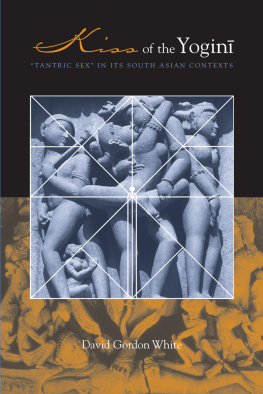
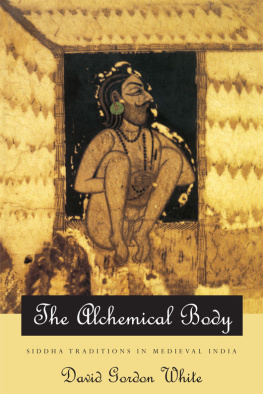
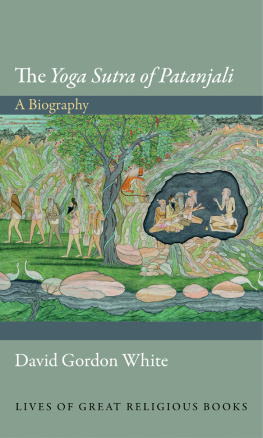

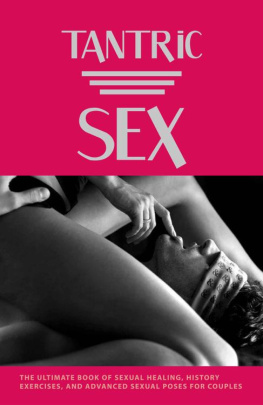
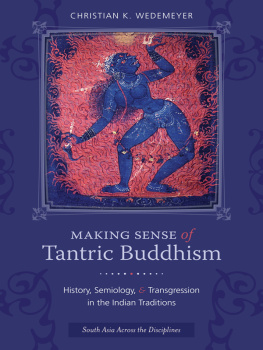
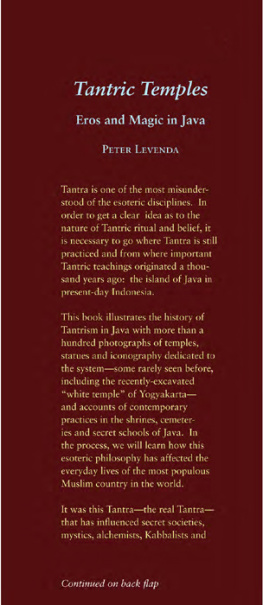
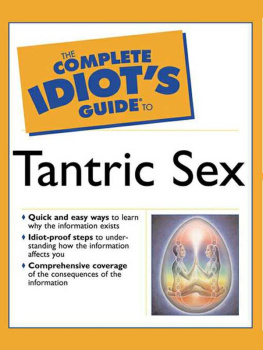
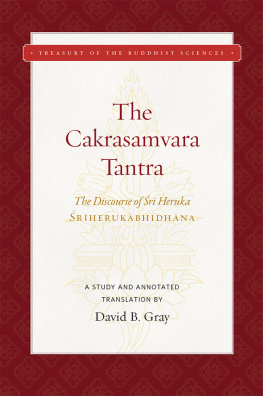
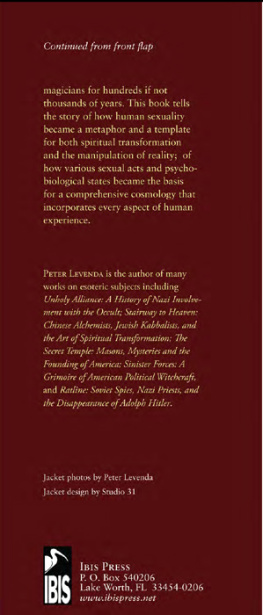

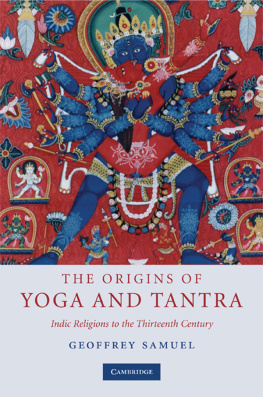
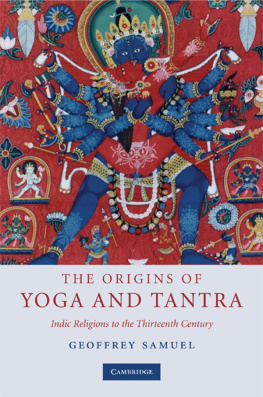
 The paper used in this publication meets the minimum requirements of the American National Standard for Information SciencesPermanence of Paper for Printed Library Materials, ANSI Z39.48-1992.
The paper used in this publication meets the minimum requirements of the American National Standard for Information SciencesPermanence of Paper for Printed Library Materials, ANSI Z39.48-1992.